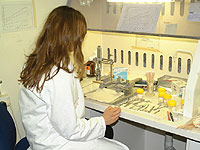| Geotechnical Mapping - CVEN9506 |
|
|||||||||||||||||||||||||||||||||||||

Description The course deals with all key elements of mapping and logging, everything from collecting the data to processing, understanding and presenting the results. Materials range from soil to rock. Data and sampling biases; together with the shortcomings of each method are addressed.
In the mapping section the different genetic maps are covered including geological, structural, geotechnical, geomorphological, air photo, specialised vector maps and landslides. The logging is an extension of the surface mapping and deals with techniques for gatherin data in the other dimension; from pits, tunnels, trenches and cuttings; using tools such as detailed face-logs, Sirojoint, simple photogrammetry, sketch maps etc. The logging of core is covered from first principles, dealing initially with the drilling process then leading through to processing the data. Elements covered include orientation techniques, oriented core, orientation logs, blind zones, Terzaghi corrections, drilling and sampling biases. The roles of the detailed, structure and summary logs are explained. The course covers four days and each course is split approximately evenly between field and laboratory/lecture room time. Field work will be at sites in the Greater Sydney area. Students should plan to allow up to a further 1 to 2 days in the field to complete the field work. |
||||||||||||||||||||||||||||||||||||||

| Contacts | Library | myUNSW | WebCT |